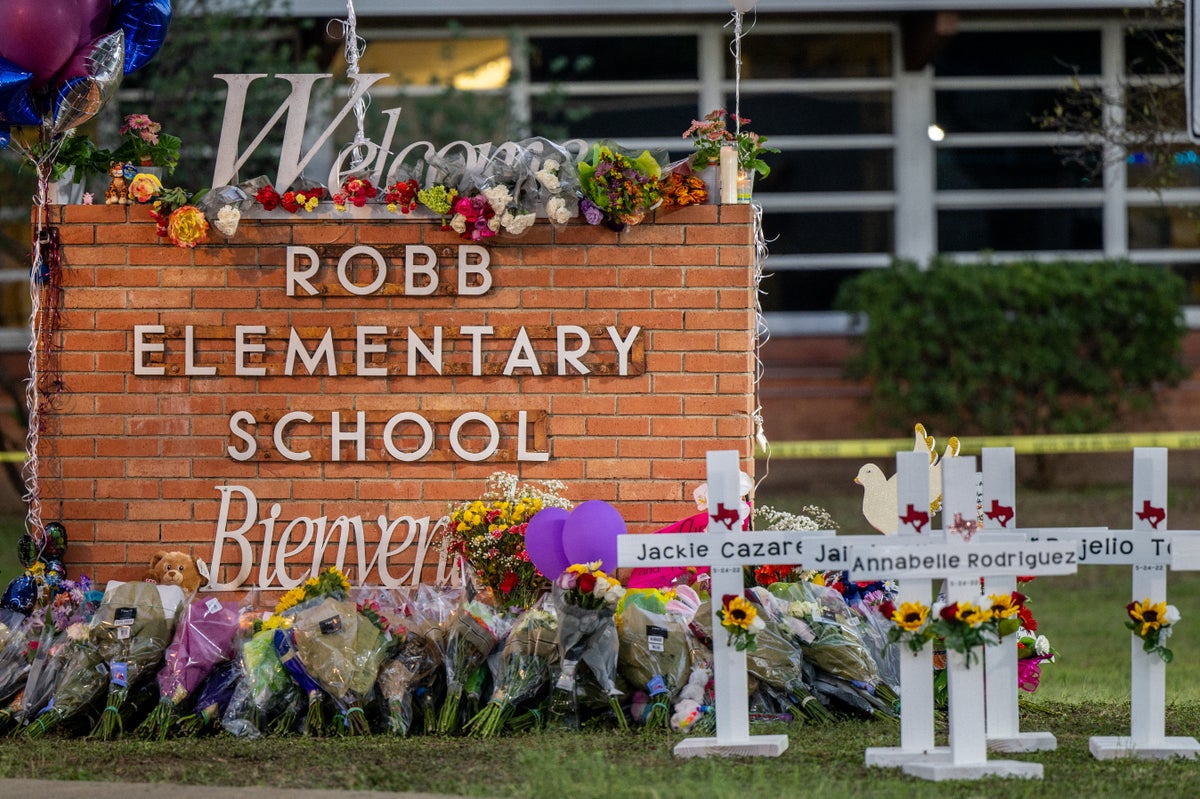
The chaotic response to the May mass school shooting in Uvalde, Texas, may have prevented some of the 21 victims of the tragedy from accessing life-saving medical care, a new investigation has found.
As police took more than an hour to engage and kill gunman Salvador Ramos, first responders struggled to get their vehicles near Robb Elementary School, while on-the-ground medics were unaware of the location of the few ambulances that did manage to make it near the school.
One of the 21 killed, fourth grade teacher Eva Mireles, sat bleeding out for roughly an hour, at one point tying a plastic bag around her arm to stop the blood loss, after she tried to shield her students.
When police finally went in and medics were able to access Mireles, she was put on a sidewalk outside the school and began receiving treatment, even though two ambulances waited just 100 feet away, according to the results of a joint investigation of official documents and police video from Texas Tribune, ProPublica, and the Washington Post.
“Had medics gotten to her quickly, there’s a good chance she would’ve survived,” Babak Sarani, director of critical care at George Washington University Hospital, told reporters as part of the project.
The apparent lapses didn’t end there.
Multiple victims emerged from the school with a pulse, but later died, as medics reported not having the resources they thought would have arrived.
In another instance, six students, some of them seriously injured, were taken to a hospital on a school bus without a trained medic because only two ambulances had arrived at the crime scene by the time Ramos was killed.
“These scenes are inherently confusing, challenging, and chaotic,” Eric Epley of the Southwest Texas Regional Advisory Council, a nonprofit that helps coordinate trauma care in Southwest Texas, told the investigation’s reporters. “We remain steadfast that the decisions by the on-scene medical leadership were sound and appropriate.”
Mr Epley also noted first responders struggled with issues outside their control, like a faulty radio system.
The investigation is the latest in a string of damning allegations against local and state emergency officials in Texas over how they handled the Uvalde shooting.
Nearly 400 officers were on scene that day, but it took police 77 minutes to breach a classroom and shoot Ramos, despite having been trained repeatedly on mass shootings and possessing body armour and assault weapons.
In July, a report from the Texas House of Representatives described the response as “chaos” and said officers “failed to prioritise saving the lives of innocent victims over their own safety”.
“There was an overall lackadaisical approach by law enforcement at the scene. For many, that was because they were given and relied upon inaccurate information. For others, they had enough information to know better,” the report added.
During the response to the shooting, officers committed multiple blunders, including believing a door to the classroom where Ramos was shooting students was locked and required a special key.
In August, Uvalde’s school board fired Pete Arredondo, the head of the school’s police force. According to district protocol, he was the designated incident commander in the event of a mass shooting, though Mr Arredondo has argued this is inaccurate.







